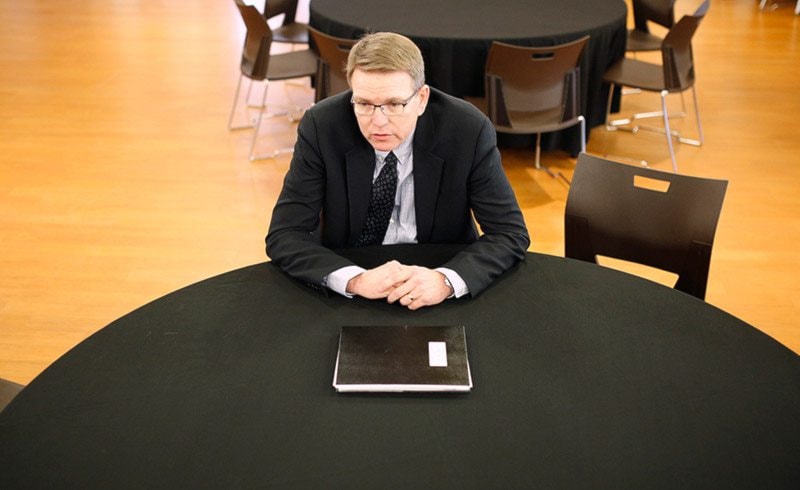A Yukon territorial judge has raised concerns over the RCMP’s handling of video evidence.
Judge Michael Cozens acquitted John Lavallee of impaired driving on Nov. 2 but criticized the RCMP for losing the video from the police cruiser’s onboard camera.
“The preservation of police audio and video recordings is of great assistance to a court in determining the actual circumstances of an arrest or the nature of any interaction between an accused person and the police,” Cozens wrote.
At issue during the trial was whether the RCMP officer who charged Lavallee with impaired driving had reasonable grounds to ask him for a breath sample.
Ultimately Cozens acquitted Lavallee, ruling he had been unlawfully detained.
“Here, for example, a video would have been of value in considering (police) evidence about Mr. Lavallee’s degree of intoxication,” Cozens wrote.
It’s not the first time there have been issues with the RCMP’s Video Incident Capture System (VICS).
In 2012 Daniel Fotheringham was charged with impaired driving.
According to exhibits filed in court, it took more than two years before his lawyer, Jennifer Cunningham, got ahold of video of the incident. She first requested it in October 2012.
In January 2013 the RCMP told the Crown prosecutor assigned to the case that the video “appears to be compromised.”
A year later Cunningham filed an application to have the case dismissed over the the lost videotape.
She again requested the video multiple times until the force provided her with two DVDs in April 2014.
Another exhibit in the case outlines the technical issues RCMP have encountered with cruisers’ onboard cameras.
“We have lots of issues with the VICS due to the environment: heat, cold dust, vibration, etc.,” wrote Daryl Berube, identified in the exhibit as a member of the RCMP’s informatics department.
“The main issue seems to be with the DVDRam that quits reading properly due to moving components in the trunk of a car with the above environmental issues.”
In another exhibit, Crown prosecutor Leo Lane described how the VICS system operates, after having been briefed by RCMP technicians.
There are two video cameras, one mounted near the windshield, and one in the back of the car showing the detainee. There are also two microphones, one on the first camera that can be clipped on the officer’s uniform, and one on the second camera. Only one camera and microphone can record at a time.
The video equipment is constantly recording 30-second loops while in standby. When an officer hits the record button, the previous 30 seconds are attached to the new recording. That way, the incident that caused the officer to record is fully captured.
Ultimately the video was crucial to Fotheringham’s acquittal, because it showed there was a short lapse of time between the officer getting out of his car and arresting Fotheringham — in other words, not enough time to properly investigate the impaired driving suspicions.
Mike Reynolds, a private lawyer practicing criminal law, told the News his disclosure requests — asking for the evidence the Crown prosecutor has — were always prompt and he didn’t encounter issues with video evidence.
But he recognizes video evidence can be crucial for the defence.
“Recently, a prosecutor elected to enter a stay of proceedings in relation to a fairly serious charge for one of my clients specifically because of the content of the disclosed RCMP video materials,” Reynolds wrote in an email.
Amy Steele, a legal aid defence lawyer who represented Lavallee, agrees videos can make a huge difference for the defence’s case.
“When video recordings from within police cars do not exist this means potentially exculpatory evidence is not available to defend clients,” she wrote in an email.
It could affect her client’s constitutional right to a defence, she said.
“Police car video recordings are important so that the public is reassured that police officers are acting within the scope of their legal powers when arresting people and not, for example, using excessive force on accused people.”
It’s not clear how often Yukon RCMP are experiencing problems with their videos, because the force doesn’t track how often those problems arise, Superintendent Brian Jones told the News on Tuesday.
Jones is the officer in charge of criminal operations for Yukon RCMP.
“If (the VICS) are in the vehicle they’re expected to operate properly,” he said. “Does it always work in 100 per cent of the cases? No.”
When problems with the cameras arise, officers are expected to report them to their superiors, Jones said.
“Our officers are operating under the assumption the equipment is operating properly at the time of the interaction.”
Jones said he is not aware of “huge issues” with video recording, though he said the cameras have to withstand “extreme temperatures.”
The RCMP’s videos don’t “serve” one side or another, Jones said.
“I think it’s good for the judicial process,” he said. “It serves the public interest.”
When a video captures an incident that results in criminal charges, it becomes an exhibit attached to that file. The video stays with the file as the case goes through the court.
But if personal information is captured on a video that’s not part of a specific case, the RCMP still have to keep it for two years.
The RCMP’s national headquarters has yet to respond to a request for the force’s policies regarding video evidence. The News first requested the information 10 days ago.
Contact Pierre Chauvin at pierre.chauvin@yukon-news.com
